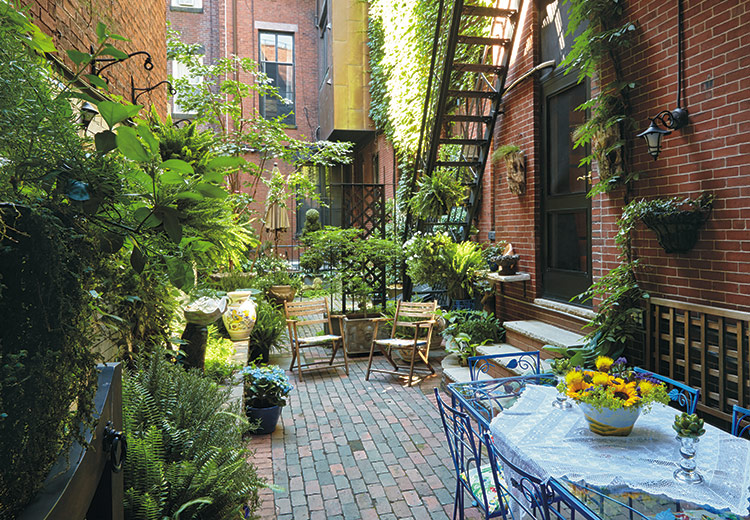Urban Gardening and Small-Space Gardening: A Guide to Cultivating a Thriving Garden in the City. Urbanization has brought many changes to the way people live and work, but it has also impacted the way they grow food and interact with nature. With a growing population and limited space in cities, many people are turning to urban gardening and small-space gardening as a way to cultivate a thriving garden in the city.
What are Urban Gardening and Small-Space Gardening?
Urban gardening refers to the practice of growing food, flowers, and other plants in the city, often in small, confined spaces like balconies, windowsills, and community gardens. Small-space gardening refers to the practice of growing plants in limited spaces, such as balconies, patios, and small backyards.

The Benefits of Urban and Small-Space Gardening
Urban and small-space gardening provide numerous benefits, including:
- Fresh, nutritious food: Growing your food in the city can provide you with fresh, nutritious produce that is free from pesticides and other harmful chemicals.
- Connecting with nature: Gardening can provide a connection with nature and help to reduce stress and anxiety, even in the heart of the city.
- Sustainability: Urban and small-space gardening promotes sustainability by reducing the amount of energy and resources needed to transport food from rural areas to the city.
- Community building: Community gardens provide a space for people to come together, work on a common goal, and build relationships with one another.
- Improving air quality: Plants release oxygen and absorb carbon dioxide, helping to improve air quality in cities.
Choosing the Right Plants for Urban and Small-Space Gardening
When it comes to urban and small-space gardening, it’s important to choose the right plants for your environment. Consider the following factors when selecting plants:
- Light: Make sure to choose plants that are suitable for the amount of light available in your space.
- Soil: Choose plants that are tolerant of the soil type and quality in your space.
- Climate: Consider the climate in your area, including temperature, humidity, and rainfall, when selecting plants.
- Maintenance: Choose plants that are low maintenance, as you may not have a lot of time or space to devote to gardening.
Container Gardening
Container gardening is a popular form of urban and small-space gardening, as it allows you to grow plants in limited spaces. Container gardens can be made from a variety of materials, including plastic, terra cotta, and wood, and can be any size or shape.
Vertical Gardening
Vertical gardening is another popular form of urban and small-space gardening that allows you to grow plants in limited spaces. Vertical gardens can be made from a variety of materials, including wire baskets, pockets made from recycled materials, and terraced planters, and can be any size or shape.
Hydroponic Gardening
Hydroponic gardening is a form of urban and small-space gardening that allows you to grow plants without soil. Instead, plants are grown in a nutrient-rich water solution. Hydroponic gardens can be made from a variety of materials, including plastic containers, PVC pipes, and commercial hydroponic systems, and can be any size or shape.
Building a Community Garden
Community gardens provide a space for people to come together and grow food, flowers, and other plants. Community gardens can be located on public or private land and can be managed by individuals, community organizations, or government agencies.
Building a community garden requires careful planning and organization, but the result is well worth the effort. Consider the following steps when building a community garden:
- Find a location: Choose a location that is easily accessible and has enough space for multiple garden plots.
- Secure permission: Obtain permission to use the land, either from a government agency, private property owner, or community organization.
- Form a steering committee: Form a steering committee to oversee the planning and implementation of the community garden.
- Develop a plan: Develop a plan that includes the size and layout of the garden, the types of plants that will be grown, and the responsibilities of each gardener.
- Raise funds: Raise funds to purchase supplies and materials, such as seeds, soil, and tools.
- Prepare the soil: Prepare the soil for planting by removing any weeds and adding compost or other organic matter.
- Plant the garden: Plant the garden with a variety of plants, including vegetables, herbs, and flowers.
Tips for Urban and Small-Space Gardening Success
Urban and small-space gardening requires some special consideration, but with the right techniques, anyone can grow a thriving garden. Consider the following tips for gardening success:
- Plan ahead: Make sure to plan your garden before you start planting, including the types of plants you want to grow, the location of your garden, and the amount of space and light available.
- Choose the right plants: Choose plants that are suitable for your environment, including the amount of light, soil, and climate in your area.
- Keep it simple: Start with a few simple plants, such as herbs, lettuce, and tomatoes, and then add more plants as you become more comfortable with gardening.
- Use containers: Use containers, such as pots and baskets, to grow plants in limited spaces.
- Practice conservation: Use conservation techniques, such as composting and water conservation, to reduce your impact on the environment.
- Get involved: Join a community garden, attend gardening workshops, and connect with other gardeners to learn more about urban and small-space gardening.
Urban and small-space gardening provides numerous benefits, including fresh, nutritious food, a connection with nature, sustainability, community building, and improved air quality. With careful planning and the right techniques, anyone can grow a thriving garden in the city. So why not start your own urban or small-space garden today and experience the joy and satisfaction of cultivating your fresh produce?